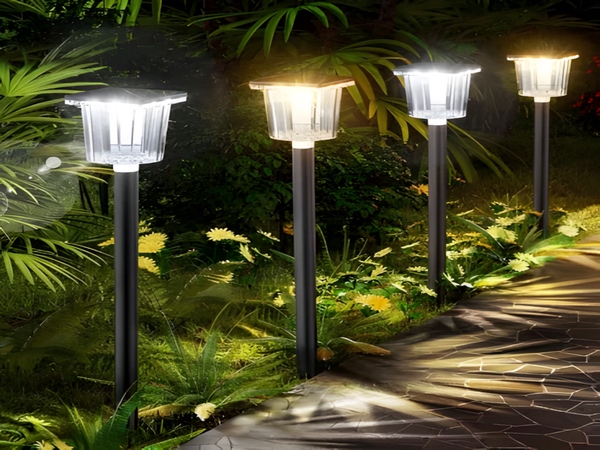

Solar street lights utilize solar energy for power generation, featuring ultra-bright LED luminaires as the light source, and are controlled by an intelligent charging and discharging controller, replacing traditional public power street lighting. Solar street lights have numerous advantages including good stability, long lifespan, high luminous efficiency, easy installation and maintenance, high safety performance, energy efficiency, environmental friendliness, and economic practicality. Do you know the components that make up a solar street light?
In this article, we will discuss the components and uses of solar street lights.
1. Solar Panel:
The solar panel is the core component of a solar street light and is also the most valuable part. Its role is to convert solar radiation into electrical energy or store it in a battery. Solar panels primarily use monocrystalline silicon as the material. These panels are crafted to resemble the P-N junction within a diode, operating similarly to a diode itself. Polycrystalline silicon solar panels are preferred for their relatively simple manufacturing process and lower cost compared to monocrystalline panels. In regions with frequent cloudy weather and less sunlight, monocrystalline solar panels are preferred due to their stable performance parameters. Amorphous silicon solar panels perform better under insufficient outdoor sunlight due to their lower requirements for sunlight conditions.
2. Solar Controller:
The solar controller is the most critical component of the solar lighting system, directly affecting the system’s lifespan, particularly the battery’s lifespan. Regardless of the size of the light fixture, a high-performance charging and discharging controller is essential. To extend the battery’s service life, its charging and discharging conditions must be regulated to prevent overcharging and deep discharging. The controller should use an industrial-grade MCU as the main controller, measuring environmental temperature and monitoring parameters such as battery and solar panel voltage and current to control the opening and closing of MOSFET devices, achieving various control and protection functions. In areas with significant temperature differences, a qualified controller should also have temperature compensation functions. Additionally, the solar controller should incorporate street light control features, including light control, timer control, and automatic load control at night to extend the street light’s operating time during rainy days.
3. Battery:
The selection of battery capacity generally follows these principles: Firstly, it should meet nighttime lighting requirements while maximizing the storage of energy produced during the day by solar panels. It must also have enough capacity to meet the energy needs of consecutive rainy nights. If the battery capacity is too small, it cannot meet nighttime lighting needs; if it is too large, it will always be in a discharged state, affecting battery life and causing waste. Due to the highly unstable input energy of solar photovoltaic systems, a battery system is typically required for operation. Options include lead-acid batteries, Ni-Cd batteries, and Ni-H batteries. The power of the solar panel must exceed the load power by a factor of at least four for the system to function correctly. The battery must be matched with the solar panel and the electrical load (street lights). A simple method can determine their relationship. The voltage of the solar panel should exceed the operating voltage of the battery by 20-30% to ensure proper charging. The battery capacity should be more than six times the daily consumption of the load.
4. Light Source:
The type of light source used in solar street lights is a crucial indicator of whether the solar fixtures will operate properly, typically employing low-voltage energy-saving lights, low-voltage sodium lights, induction lights, or LED sources.
Generally, solar street lights utilize low-voltage energy-saving lights, low-voltage sodium lights, induction lights, or LED light sources. LED light sources have a long lifespan, reaching up to 1,000,000 hours, operate at low voltage, require no inverters, and have high luminous efficacy, with domestic production at 50Lm/w and imports at 80Lm/w. As technology advances, the performance of LEDs is expected to improve further. It is believed that LEDs will likely become the predominant light source in solar street lights.

5. Lighting Pole and Fixture Housing:



